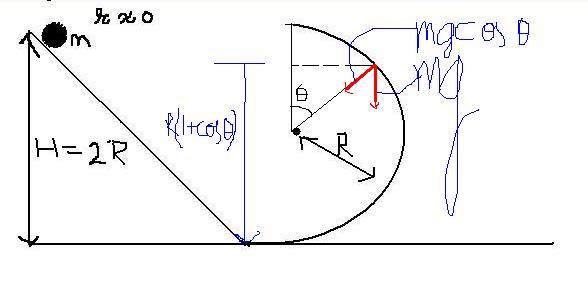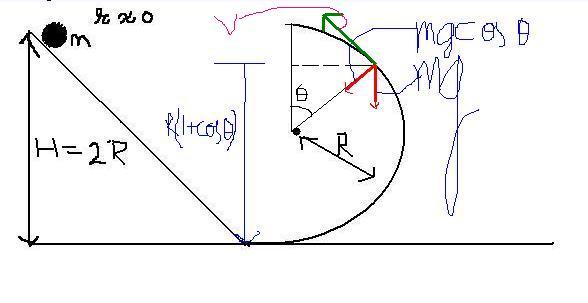
writing energy conservation..
mg2R=1/2mv2+mgR(1+cosθ)......
balancing force where it will leave the surface..
mg.cosθ=mv2/R...
From two equations..
cosθ=2/3
so it will leave surface at a height of R(1+cosθ)=5R/3
with velocity.. v=√2gR/3
in the direction shown below..
velocity is making θ with horizintal...
thereafter parabolic path so max ht there is say h
Hence the answer..
:)
